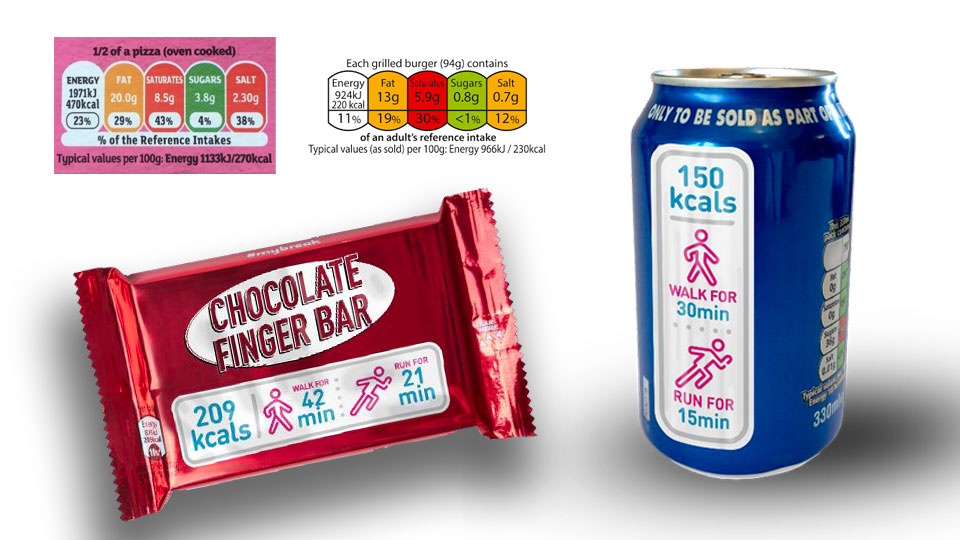The study, led by Professor Amanda Daley and colleagues from the University’s School of Sport, Exercise and Health Sciences, is due to be presented at this year’s International Congress on Obesity.
This so-called physical activity calorie equivalent (PACE) labelling was also found to be more popular among people aged under 65 years and those who are more physically active during a typical week, found the authors.
“Nutritional labels support people to make food choices and traffic light labelling is the UK standard. However, many people do not understand the meaning of kilocalories (kcals or calories) or grams of fat displayed on food labels, and often underestimate the number of calories when labelling is not provided,” explains Professor Daley.
PACE provides another approach to nutrition labelling by providing calorie information with a meaningful interpretation of what the calorie content of the food means in terms of energy expenditure. It aims to illustrate how many minutes of physical activity are equivalent to the calories contained in food and drinks. For example: “calories in this cake requires 90 minutes of walking to burn off.” Some mobile phone apps for nutrition already incorporate PACE information.*
The authors explain that while there is some evidence that PACE labelling may be effective** in reducing calorie consumption, there is a lack of evidence about the views of the public concerning potential implementation in food settings. This new study obtained data from a nationally representative sample of adults recruited via the UK Ipsos KnowledgePanel.***
The KnowledgePanel contained 14,016 panellists and 4000 were randomly invited to participate. The sample was stratified by education, region, ethnicity, deprivation, urbanity of home, age and gender. Participants were asked to compare their views about traffic light and PACE labelling regarding which they preferred, found easier to understand, caught their attention the most, and more likely to help them avoid high calorie foods.
A total of2668 (67%) of those invited participated. Overall, slightly more participants preferred existing traffic light (43% vs. 33%) to PACE labelling. However, more participants reported PACE was easier to understand (41% vs 27%) and more likely to catch their attention (49% vs 31%).
Respondents who were physically active at least 3–4 times per week and 5 or more times per week were 42% and 45% more likely, respectively, to report PACE would catch their attention more than traffic light labelling, compared with participants who were active 0–2 times per week.
More participants thought PACE was more likely to help them avoid high calorie food than traffic light labelling (44% vs 28%). Those aged 65 years and older were 40% less likely to prefer PACE over traffic light labelling compared with the youngest group (18-44 years).
There was a preference for PACE labelling to be placed on discretionary foods, for example chocolate and cakes, rather than ‘every day’ food items like bread, pasta, fruit and vegetables, and a preference for PACE to be displayed in fast food outlets, supermarkets, takeaway/online menus and vending machines, all locations that typically sell high energy dense food and drinks.
The authors conclude: “Ourfindings highlight that PACE labelling is a potentially important policy-based approach to strengthen current approaches to food labelling. The next steps are to test whether PACE labelling reduces the purchases of high calorie foods and drinks in different food settings such as restaurants, vending machines, coffee shops and pubs.”
Professor Daley’s team is about to begin trials of PACE labelling in cafeteria and vending machine settings.

